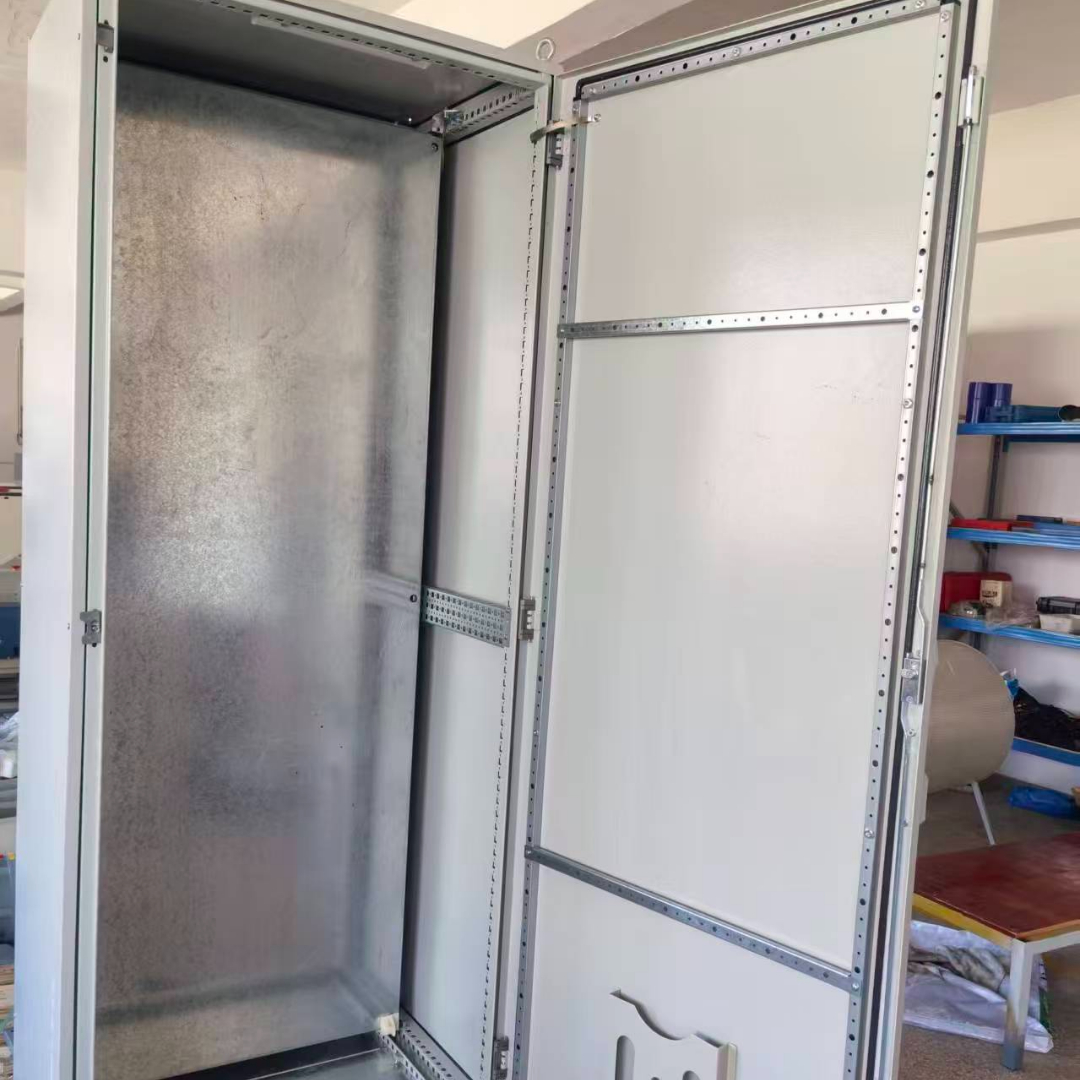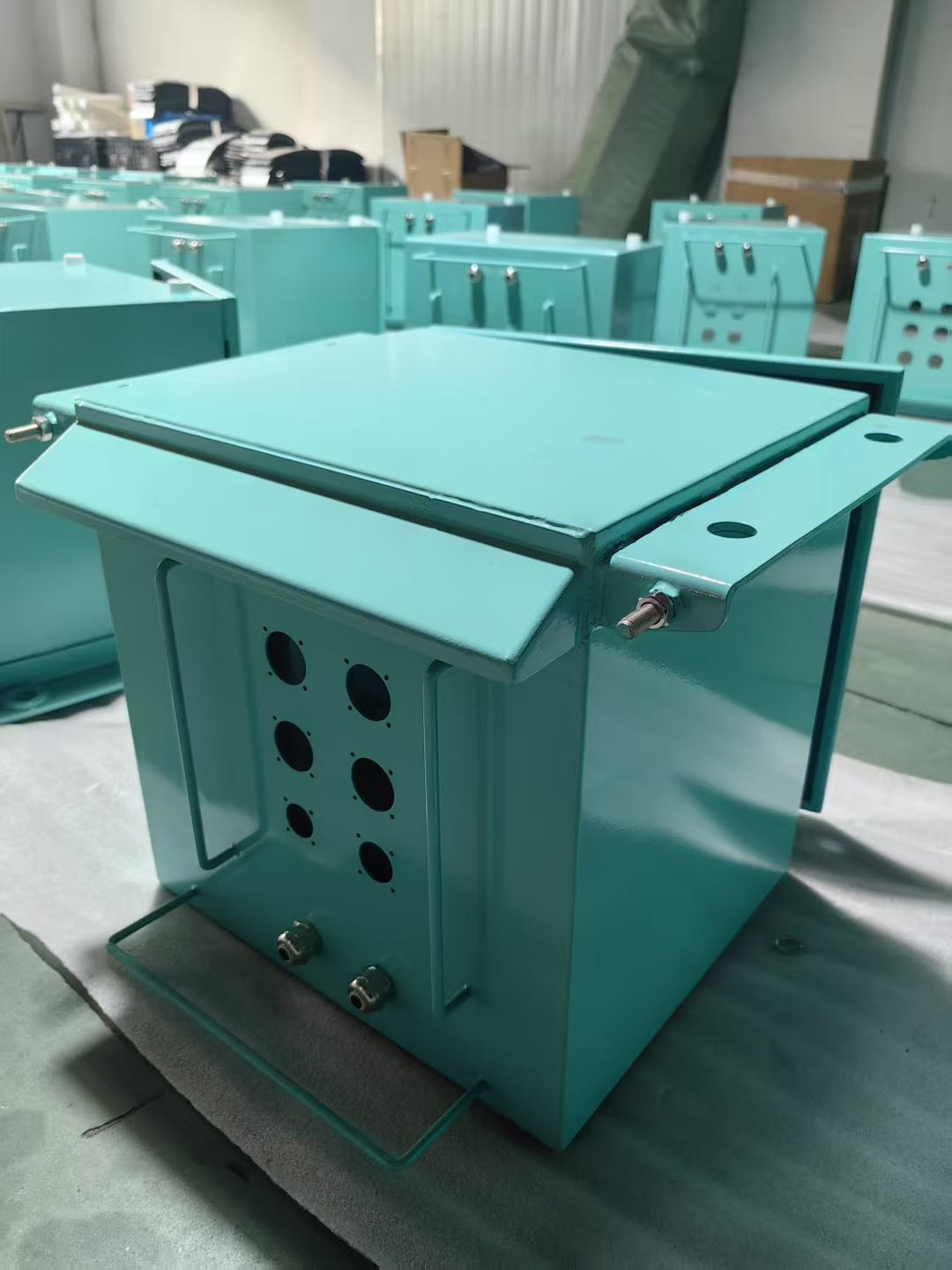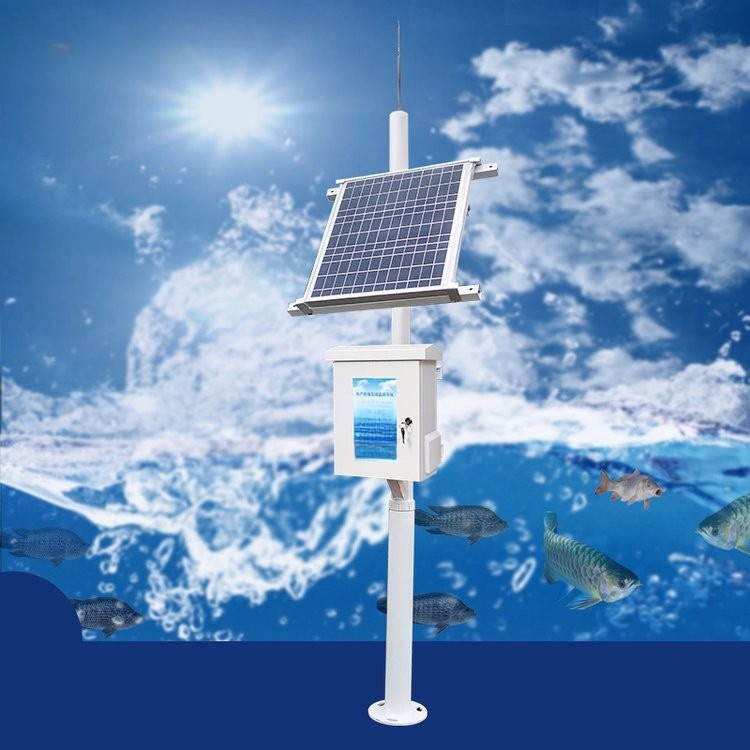Home / News / Industry news
Industry news
Aug 11,2025
By:Shinging
Almost all electronic devices need a case to safeguard and shield their parts. An electronics enclosure is the solid, sturdy casing that surrounds various types of electronics, ranging from advanced medical equipment to basic handheld items such as electronic key fobs. At times, the ready-made enclosures that are offered may not meet the specific requirements of your application. In these situations, it makes sense to consider how to create custom electronics enclosures and if it’s feasible to do it internally. Regrettably, the method for creating tailored electronics enclosures is one that many companies are not prepared for, or the expenses involved often surpass the advantages.
Many companies opt for custom electronics enclosures from Shinging instead. Our enclosures are crafted to fulfill top performance criteria while also providing ample customization choices. This article examines the fundamentals of creating custom electronics enclosures and explains why it can be beneficial to let Shinging manage the enclosure customization process for you.
Comprehending Methods for Creating Tailored Electronic Enclosures
Initially, it's useful to understand the fundamental concept of how enclosures are created. The production process differs significantly based on the materials utilized, so let’s examine a few of the most prevalent manufacturing methods:
Stainless Steel Enclosures: A stainless steel enclosure consists of multiple stainless steel plates that are cut, combined, and subsequently welded together. Because of the high hardness of stainless steel, specialized tools are necessary for welding and cutting processes.
Aluminum enclosures are typically produced through either die casting or extrusion methods. During die casting, the producer injects liquid aluminum into a mold, whereas in the extrusion process, aluminum is forced through a die to form elongated sections that are thereafter trimmed to the required length.
Polycarbonate Plastic Enclosures: The production method for polycarbonate enclosures begins with introducing thermoplastic pellets into a heated cylinder where they are melted and blended. The plastic blend is subsequently forced into a mold through pressurized injection and permitted to cool.
ABS Plastic Enclosures: ABS enclosures are produced through a process akin to polycarbonate, involving an emulsified blend of plastic materials that are heated and injected into a mold. Because it is a thermoplastic material that can be heated and reshaped repeatedly, ABS is frequently recycled.
Having established a fundamental understanding of the methods involved in enclosure production, let’s examine key factors in creating custom electronic enclosures tailored to your application’s requirements.
Enclosure Size: Clearly, your electronics enclosure must be sufficiently spacious to comfortably accommodate all components, but there's more to consider. You'll need to take into account aspects like whether the spacing between components is adequate to prevent crosstalk and interference, along with whether the enclosure offers sufficient room for device assembly and upkeep.
Enclosure Material: The material of your enclosure should also satisfy your requirements. The choice of enclosure material will influence numerous factors we’ll discuss next, so refer to our enclosure material guide to understand how to select the appropriate material for your enclosure. If you are handling in-house enclosure manufacturing, the enclosure material will also be the primary aspect influencing the process and machinery you will require.
NEMA Rating/IP Rating: NEMA ratings and IP ratings are two methods utilized to evaluate an enclosure's protective features against elements like water and dust intrusion. If you're unsure about the necessary NEMA or IP rating for your device enclosure, be sure to check our guides on NEMA ratings and IP ratings to understand the basics of these rating systems.
Ambient Temperature Rating: Your enclosure must be constructed to endure the ambient temperatures of its operational surroundings. Ensure that your enclosure's rated operating temperature is comfortably within the ambient temperature range that your device will encounter.
Internal Temperature Rating: The heat produced by device parts can cause significant issues for the device's functionality if the enclosure lacks adequate ventilation and cooling. Study key aspects such as determining internal temperature increases in enclosures, the supply flow rate of small cooling fans, and the pressure drop characteristics in electronic housings. These ideas will assist you in grasping your device’s cooling and venting requirements.
Enclosure Accessories: Numerous device enclosures will need extra accessories, like mounting hardware or cable glands, that must be accurately matched with the enclosure’s cutouts. Explore our complete range of enclosure accessories to discover the various accessory choices Shinging provides for our electronics enclosures.
Defining a stock enclosure with tailored attributes in your bill of materials instead of a custom-built one can lead to significant time and resource savings. By utilizing some design adaptability and imaginative thinking, it’s frequently feasible to discover a stock enclosure that can be tailored to suit your requirements. What if we create custom enclosures through in-house fabrication? Following that, we’ll discuss why this is frequently more challenging than one might anticipate.
Is it possible for me to create my own custom enclosures internally?
Though you can build your own bespoke electronics enclosures internally, the process can be quite challenging. Without access to quality materials and manufacturing tools, the outcomes might not satisfy your requirements. Here are several reasons why numerous companies opt to outsource their custom enclosure production:
Capital Investment: Primarily, materials like stainless steel, aluminum, and polycarbonate necessitate advanced machinery to produce at a high-performance level. Is your company prepared to invest in, for instance, a die casting machine for aluminum housings or the specific tools required to weld stainless steel? If you plan to utilize digital printing or CNC machining for your enclosures, you'll have to acquire additional equipment or outsource your customization tasks to a contract manufacturer.
Process Knowledge: Do your manufacturing and engineering teams understand the various tool bit types needed for a plastic enclosure versus a metal enclosure? How do the precise torque settings and methods needed for drilling into these materials without causing damage? These are merely some of the numerous factors you’ll need to remember when producing enclosures internally.
Labor Expenses: Producing enclosures internally frequently requires reallocating labor from other responsibilities to focus on the engineering of specialized enclosures. Engineering personnel might need to operate beyond their specific fields of expertise, potentially resulting in employee discontent, diminished morale, and preventable errors.
Scrap Expenses: Even if you ultimately manage to establish a productive and efficient manufacturing procedure, it frequently involves some experimentation to reach that point. Is your company ready to handle the scrap expenses that may arise from manufacturing a batch of enclosures with flaws rendering them unusable?
Personalizing a Shining Enclosure: The Fundamentals
Shinging provides tailored enclosure solutions that are significantly quicker, simpler, and more economical than creating your own custom electronics enclosure. Customers have the option of selecting custom CNC machined cutouts and custom vibrant digital printing. Our enclosure customization process excels beyond others in crucial aspects, such as:
Lead Time: In contrast to certain manufacturers that necessitate orders months ahead of time, our lead time for bespoke enclosures typically ranges from one to three weeks. When you have a project that requires urgent attention or need to swiftly cover for another supplier, Shinging provides the quick and efficient service you require.
Engineering Assistance: Whenever you require support during the enclosure customization process, our specialists are ready to assist you. We understand our products thoroughly, and our customer service team is equipped to assist customers in navigating the customization process.
Extensive Range: Shinging offers a broad variety of enclosure models designed for numerous applications. Rather than the costly and complicated method of individually creating each enclosure, we provide a vast array of prefabricated enclosures that our customers can adjust to fit their specific requirements using our robust and adaptable customization choices.
How does the actual process of personalizing a Shinging enclosure function? To discover, let's analyze the main aspects of each technology Shinging employs to produce high-performance tailored enclosures for our clients.
Custom CNC-Made Enclosures from Shinging
CNC machining is a method employed to form accurate cutouts in a substance by utilizing a computer-controlled laser. This method is the benchmark in enclosure machining due to its exceptional accuracy in laser cutting and its capacity to almost eradicate human mistakes in the machining process when executed properly. The benefits of Shinging’s CNC machining method consist of:
Exact Cuts: Our CNC machining achieves remarkably exact cuts, maintaining a tolerance of just +/-.005”. This means our clients can trust that they'll get an enclosure that precisely meets their specifications.
Minimal Waste: Precision CNC machining results in minimal material wastage and features very low error rates, indicating that scrap expenses for our customization methods are generally quite low too.
Advanced Features: Shinging’s machining options encompass a wide range, from basic cuts to counterbored and threaded holes. We can produce nearly any type of cut, and our technical assistance team is always eager to help customers determine the best way to carry out the cuts they require.
Bespoke Digital Printing on Enclosures by Shinging
Numerous electronic devices require images or text printed on them to convey instructions, safety alerts, or branding. Historically, manufacturers have employed various techniques to achieve this, such as adhesive labels.
Shinging provides our clients something far superior. Our digital printing method in full color offers numerous benefits compared to alternative printing methods for electronic housings:
No Labels: Labels on containers frequently yield unsatisfactory outcomes, like misalignment or bubbling. Shinging’s personalized digital printing transfers your image straight onto the case, ensuring a sharp, clear image consistently. Direct digital printing also removes the necessity for tedious manual application that numerous manufacturers face with labels.
Long-lasting Printing: When images and text wear off from a casing, it can range from an inconvenience (losing your brand emblem) to a significant risk (losing essential safety alerts and usage instructions). Shinging employs long-lasting, UV-resistant inks to avoid fading and scratching, ensuring an image that can maintain its quality forever.
Top Quality: Our digital printing delivers vibrant, high-resolution images that truly stand out. They are prominent in the dense visual landscape of numerous workplaces, which is vital for equipment that requires safety alerts or other essential details to be printed on them.
Ordering Customized Electronics Enclosures from Shinging
Every customization option for enclosures is meaningless if they're difficult to use and comprehend. That’s why Shinging has optimized our enclosure customization process to offer an easy method for customizing your enclosure. The procedure for requesting a personalized enclosure operates in the following manner:
Explore our complete range of electronic enclosures and discover the ideal enclosure for your needs.
Utilize our quick quote tool to choose the model you require and enter key specifications to receive your estimate.
Submit a sketch of the cuts or print design you require.
For CNC machining, we are able to accept numerous formats including AutoCAD designs. Check our complete list of permissible printing and machining formats for additional details.
For digital printing, we need vector-based graphics created in the CMYK color space. Permissible formats consist of .pdf or .eps files generated through software like Adobe Illustrator or Corel Draw. We can also obtain artwork from an AutoCAD drawing or create a basic sketch as long as it has suitable instructions.
Submit your order and we’ll deliver your personalized enclosures directly to your home.
Shinging provides the simplest, quickest, and most affordable route to personalized electronics enclosures. We’re pleased to assist you in beginning today. Simply obtain a tailored enclosure quote by using our simple online form, or contact us at +86 18939857433 to talk with our enclosure specialists.

The evolution of the Electrical panel cabinet Enclosure is crucial in promoting industrial automation, power distribution, and facility management. Mo...
Dec 27,2025 / Industry news
As solar energy systems become an indispensable part of sustainable business operations, the demand for reliable Battery storage enclosure Enclosure i...
Dec 22,2025 / Industry news
The global shift towards renewable energy has made solar energy the cornerstone of sustainable infrastructure. For commercial professionals supervisin...
Dec 18,2025 / Industry newsOnline

Provider of Complete Metal Manufacturing Solutions
+86 18939857433
1188 Jiu Ye Road, Shanghai, China
11561 N Lamar Blvd,Austin,Texas,United States of America,78753
Gyeongin-ro 56-gil 8, ,3F jjbeauty,Guro-gu,Seoul,Guro-gu,Seoul,Republic of Korea
Top
Copyright © 2025 Shinging Technology Co., Ltd.,
Power By Bontop